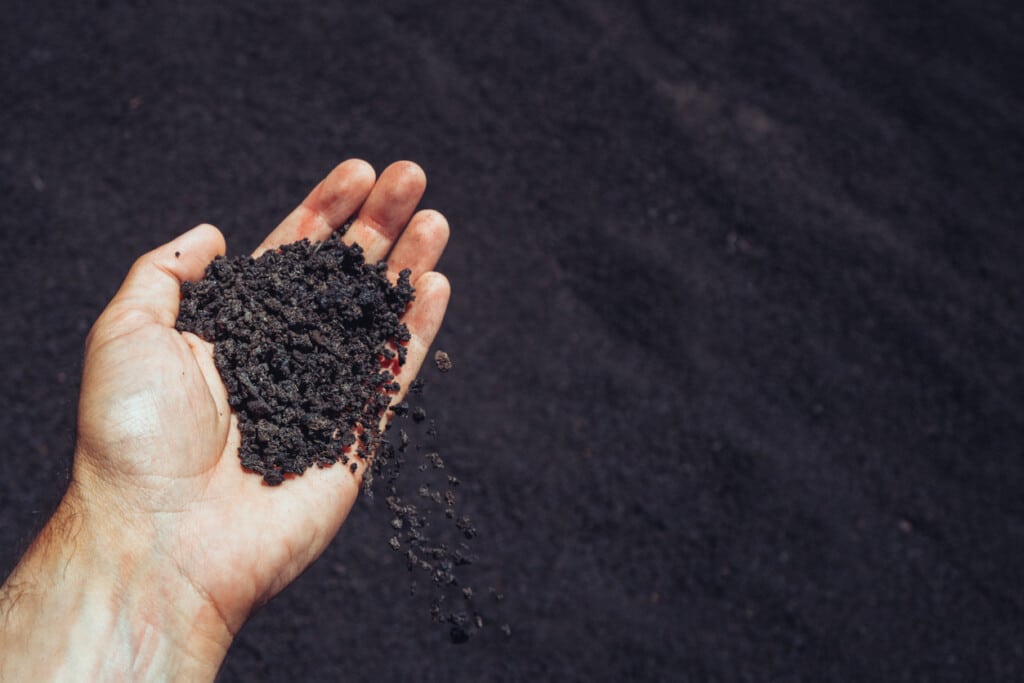Soil is a biological wonderland teeming with microorganisms. There are more microorganisms in a single teaspoon of soil than people on Earth. Each kilogram of fertile soil can host an astonishing 500 billion bacteria (roughly 100 times the human population), 10 billion actinomycetes, and about 1 billion fungi. These tiny creatures are the unsung heroes of soil fertility. They cycle nutrients, improve soil structure, and support robust plant growth. Microorganisms also play a crucial role in breaking down harmful substances using special enzymes.
To boost soil health, we aim to increase the diversity of beneficial microorganisms. These microbial superheroes naturally inhabit the soil, producing antibiotics, enzymes, and phytohormones that benefit plants.
Microorganisms in soil depend on several factors, including temperature, humidity, oxygen levels, soil pH, and nutrient availability. Here’s a breakdown:
- Temperature: Temperature significantly influences the development of soil organisms. These microorganisms can thrive in various temperatures. However, extremely low or high temperatures can reduce their enzymatic activity or cause protein denaturation.
- Humidity: Adequate water availability is essential for soil microorganisms. It directly impacts nutrient absorption, intracellular metabolism, soil aeration, and adherence to clay particles.
- Oxygen: The concentration of oxygen in the soil determines which species can thrive. Well-aerated soils lead to increased energy production, higher microorganism populations, and enhanced decomposition of organic materials.
- pH Levels: The pH of the soil also plays a vital role. Microorganisms thrive best within the pH range of 5.0 to 7.0. pH values outside this range can inhibit their growth due to high concentrations of H+ or OH– ions.

Increasing soil carbon levels can lead to better plant establishment and growth. While increasing soil carbon is highly desirable, it is also easily lost, so maintaining what you have is important.
Microbial Fertilisers
Microbial fertilisers are natural products containing bacteria, algae, fungi, or biological compounds. They benefit soil and plants by colonising the rhizosphere (the root zone) and making nutrients readily available to plant root hairs. When introduced into the soil, these microbes quickly colonise the rhizosphere, multiplying exponentially in the first 48 hours and producing trillions of microbes.
The Importance of Carbon for Soil Microorganisms
Soil microorganisms thrive as long as there’s a carbon source for energy. Humic acid is one such source that’s instrumental in fueling their activity.
Microorganisms offer a plethora of benefits to soil and plants:
- Disease Control: They help control the spread of diseases through competition, antibiosis, parasitism, and resistance induction.
- Nutrient Mineralisation: They break down organic substances, making nutrients available to plants.
- Phosphate Solubilisation: Microbes unlock bound phosphate in the soil, making it accessible for plant root uptake.
- Salinity Control: Microbes reduce the effect of soil salinity, improving nutrient absorption by plants.
- Chemical Phytotoxicity and Heavy Metals: Microorganisms can metabolise heavy metals and transform them into inert substances.
- Enhanced Plant Tolerance to Abiotic Stresses: They help plants tolerate water stress and produce phytohormones that drive growth.
- Improving Soil Structure: Soil bacteria contribute to efficient water use and moisture retention by forming microaggregates.
- Indicator of Soil Quality: Microbial biomass is essential to soil quality, as it recycles nutrients for plant use.
Mycorrhiza: The Symbiotic Connection
Mycorrhizal associations are mutualistic symbioses between soil fungi and plant roots, benefiting over 95% of plants. Two common types are ectomycorrhizas and endomycorrhizas, which help plants collect water and nutrients.
Mycorrhizae offer many benefits, including improved root structure, nutrient regulation, increased chlorophyll, better anchoring, phosphate supply, enhanced photosynthesis, improved plant reserves, and reduced mortality during transplanting. They also make plants more resilient to environmental stress.
Understanding the world of soil microorganisms and their symbiotic relationships can help us unlock the full potential of soil health and plant growth.
Got a question for our Agronomist? Click here
Article compiled by our Redox Agronomists